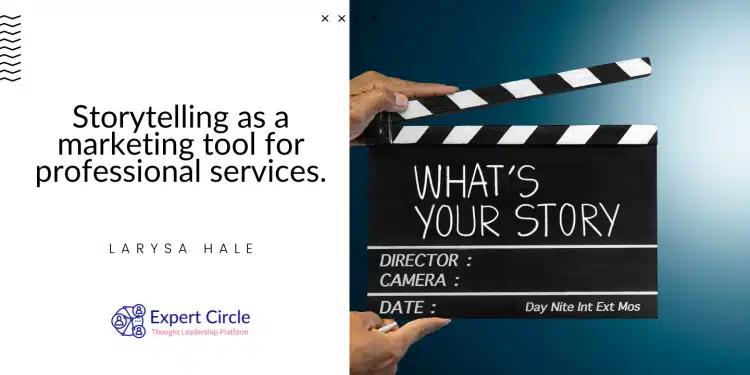Storytelling is a powerful tool that professional services firms can use to build their brand and marketing strategies. According to neuroscience research, stories have the ability to attract people’s attention, present new perspectives, and influence their mindsets. As our brains create connections that are much more intensive compared to facts and data, tapping into people’s emotions is how stories inspire and motivate and, eventually, drive action.
In professional services, storytelling can help to engage clients and guide them on their buying journey. As services are intangible, clients are essentially buying a promise, and unless they trust that promise, they won’t be motivated to engage. Using stories in business creates a competitive advantage, as it helps to create an effective communication strategy, both internally and externally, triggers interest with potential clients, and strengthens loyalty with existing ones. Additionally, storytelling affects how clients remember a firm and motivate its team.
Understand your audience
To create and deliver impactful stories that create emotional connections, there are several key aspects to consider. Firstly, it’s important to know the audience to trigger and keep their attention. A firm should be able to identify relevant stories and choose the best way to tell them so that they trigger the intended reaction. By showing the audience that a firm understands its challenges, context, and culture, it builds trust. By telling the right story at the right time, it can visualize the story to allow the audience to create an emotional connection that can impact their thinking.
Make your clients a hero of your stories
Firms should not make themselves the hero of the story but rather make their clients the hero. The role of a firm is to help clients succeed, so it should guide them through the story instead of putting itself in the position of the hero. Rather than focusing on the features of their products and services, firms should make the story about their clients’ aspirations, such as the results and experience that their products and services can create. By answering clients’ questions and presenting solutions in a context that is relevant to them, in the form of a simple story, firms can help to deepen their interest in the solutions on offer.
Three top tactics you can use:
- Articulating the solution clearly and using stories to present alternative scenarios is also important.
- Visualizing stories can allow clients to create an emotional connection that can impact their thinking by presenting alternative scenarios and perspectives that they wouldn’t consider otherwise.
- The power of silence is also a powerful storytelling tool, drawing emphasis on what has just been said or what’s coming next and giving listeners the time and space to think of their own interpretation.
Getting to the point immediately and giving the story structure can also help to create an impactful story. For instance, a story can begin by describing the situation, followed by presenting the problems that the main characters are trying to solve, and gradually building up the tension until the problem is solved.
Alternatively, a story can start with a problem, ideally, one that the firm can solve, and then describe the situation in which the problem does not exist, followed by explaining how the firm got there or presenting specific solutions to the problem.
In conclusion, professional services firms can use storytelling to engage with clients, guide them on their buying journey, and build their brand and marketing strategies. By creating and delivering impactful stories that create emotional connections, firms can trigger interest with potential clients, strengthen loyalty with existing ones, and affect how clients remember the firm.



Get involved!
Comments